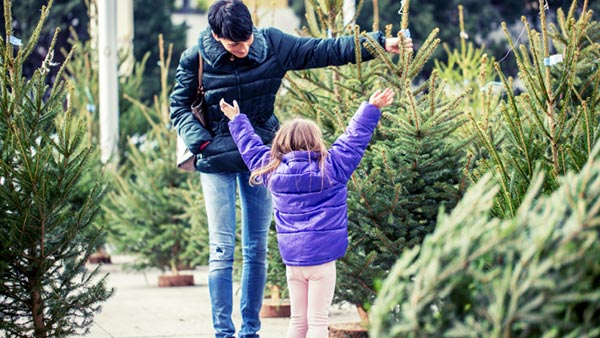Each year, U.S. fire departments respond to nearly 230 home structure fires that start with Christmas trees. Home Christmas tree fires cause an average of six deaths, 22 injuries and more than $18 million in direct property damage annually, and the danger can extend beyond Christmas.
According to a November 2015 report on Christmas tree fires by the National Fire Protection Association, one of every 40 reported home structure Christmas tree fires results in a death. Nationally, an average of one death per 142 total reported home structure fires occurs – meaning fires that start with a Christmas tree are more than three times as likely to result in a fatality.
Electrical failures or malfunctions are involved in nearly one-third (32 percent) of home Christmas tree structure fires. Decorative lights are involved in 12 percent of these incidents. Seven percent of home Christmas tree fires were started by candles.
Home Christmas tree fires are about equally likely to occur in December (44 percent) and January (37 percent), the NFPA found, with the 10 dates with the largest shares of home Christmas tree structure fires occurring after Christmas.
To prevent a Christmas tree fire and holiday injuries in your home:
- Check the tree for freshness when you buy it, and inspect it daily for signs of aging. A fresh tree is green. Its needles are hard to pull from branches and do not break when bent between your fingers. The bottom of a fresh tree is sticky with resin. When tapped on the ground, a fresh tree should not lose many needles.
- Keep the tree stand filled with water.
- Place the tree out of the way of foot traffic, and do not block doorways and exits with the tree.
- Place live trees away from heat sources, such as fireplaces, vents and radiators. Because heated rooms rapidly dry out live trees, monitor water levels daily. A heat source too close to the tree causes one in six (16 percent) Christmas tree fires.
- Use tree lights that have been tested by a nationally recognized testing laboratory such as Underwriters Laboratories (UL), Intertek (ETL) or the Canadian Standards Association (CSA). Lights for both indoor and outdoor use must meet strict requirements that testing laboratories are able to verify. UL’s red holographic label signifies the lights meet safety requirements for indoor and outdoor use. UL’s green holographic label signifies the light meets requirements for indoor use only.
- Check each set of lights. Examine new and old lights for broken or cracked sockets, frayed or bare wires, or loose connections. Throw out damaged sets.
- Make sure Christmas tree lights are off before going to bed each night or if leaving your home for extended periods.
- Check extension cords. Make sure each extension cord is rated for the intended use and is in good condition. Do not use cords with cuts or signs of fraying.
- Be aware of burnt out lights or cords too close to the tree.
- Keep holiday candles away from Christmas trees, surrounding furniture and décor.
- Look for the label “fire resistant,” if buying an artificial tree. Although the label does not mean the tree will not catch fire, it does indicate the tree is more resistant to catching fire.
- Prevent shock; do not use electric lights with metallic trees.
And, as the holiday season progresses, keep an eye on the general condition of the tree. If you doubt its safety, set it outside and discard or recycle.
More safety information and tips on selecting a fresh Christmas tree are available from the American Christmas Tree Association.
Two NFPA videos offer more safety tips and recommendations for when to dispose of a live tree.
This loss control information is advisory only. The author assumes no responsibility for management or control of loss control activities. Not all exposures are identified in this article.

